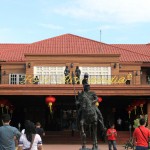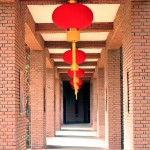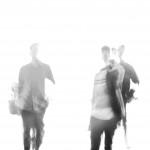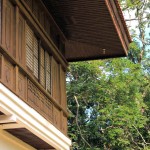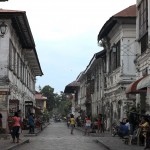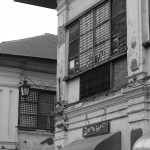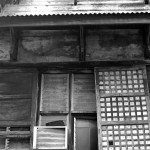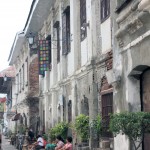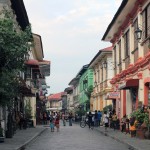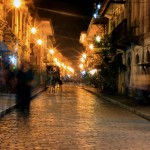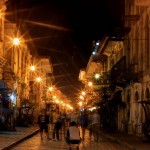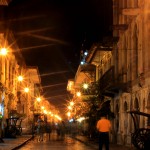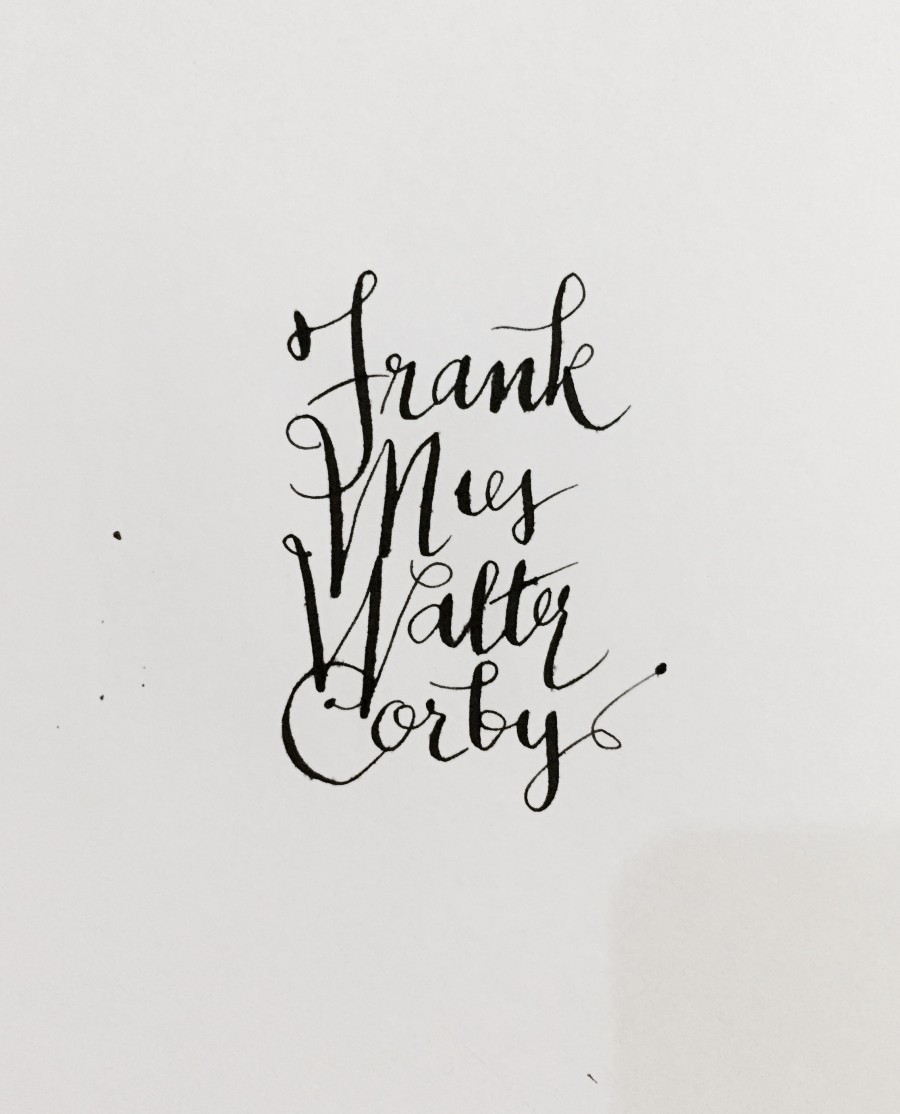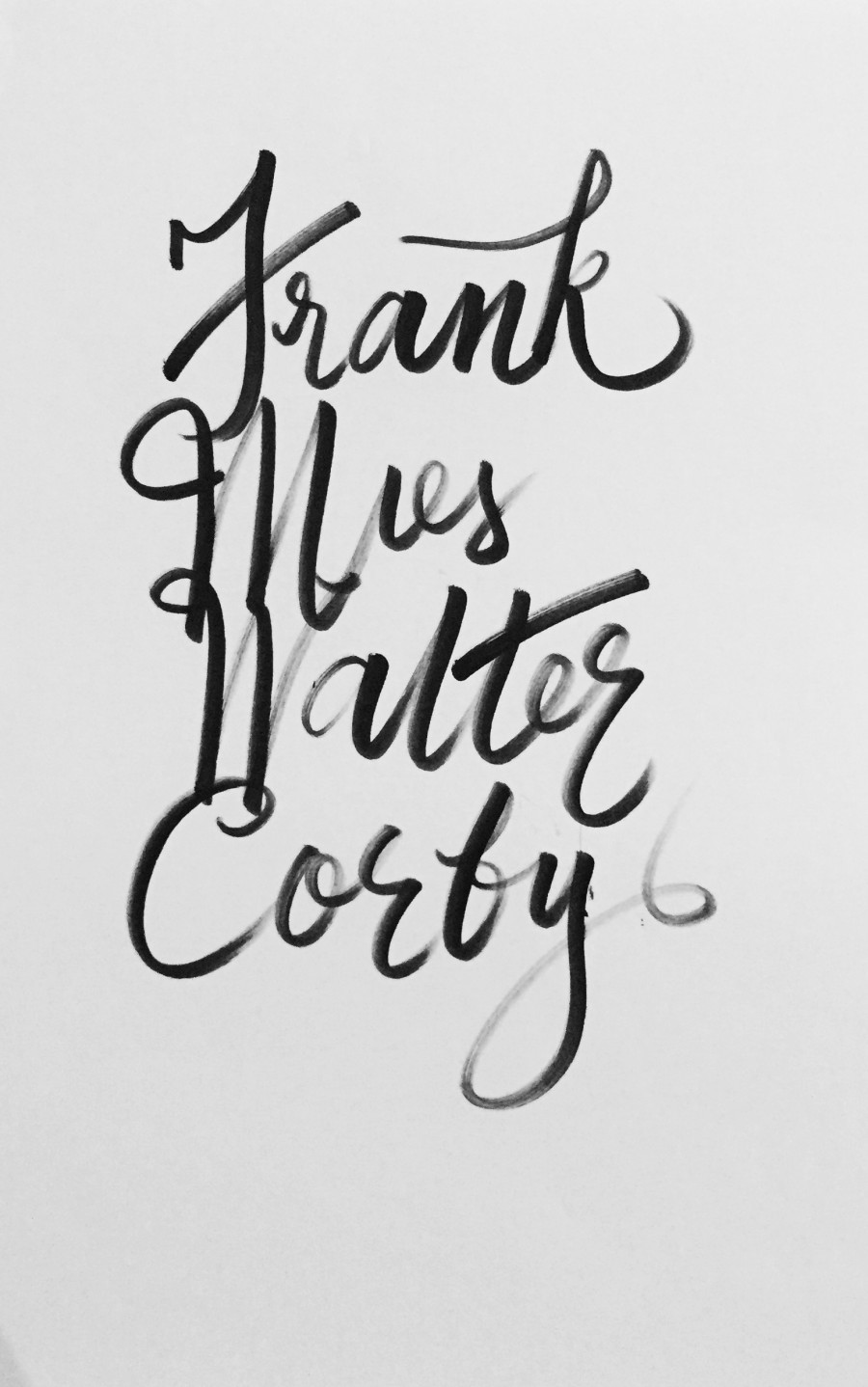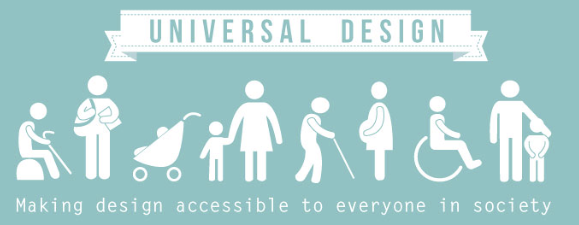Cheers!
Deanne
Monthly Archives: July 2015
What Architecture Should Be
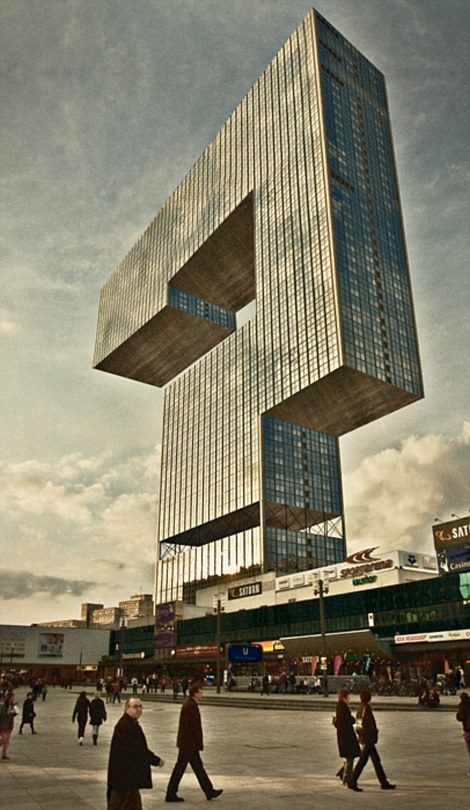
Image retrieved from http://www.dailymail.co.uk/news/article-2750431/It-s-sew-cold-Turning-autumn-winter-needle-thread-neat-idea-laying-roads-artist-creates-fantastic-surreal-landscapes.html
The book “Image of A City” written by Kevin Lynch is a well-written book that talks about the concepts of imageability, legibility and way-finding that contributed to urban planning, architecture and even environmental psychology its variety, importance and how the users react to it. Lynch discussed how the elements of the city are interrelated to one another that contributes to the formation of its image. He cited three cities in his study discussing the conceptual framework for the “imageability” of each one and their dynamics: Boston Massachusetts, New Jersey, and San Francisco California, which are radically different from each other. He talked about the recurring elements of the city and its interrelation and how Paths, Edge, Districts, Nodes and Landmarks affect its image. In that sense, Lynch was thinking of “Image” as a picture that is seen in the mind on different perspectives of different observers. He stated that a highly imageable city should be well-formed, distinct and remarkable. The said image is a dynamic process that does not only differ from scale but by viewpoint and time. At this point in time, cities continue to grow according to the needs of the users but the form shall not be retained as simple when it started growing, rather, it continues to grow into complicated forms that is receptive to new formation to be able to create a new image, thereby, a clear city image allows the observers to perceive it as a whole.
Upon reading the book, a formulation came in to mind about the notion of what architecture should be. Architecture should not only be perceived, it must be experienced, just like the concept in the book of Kevin Lynch, Image of the City. Perceiving buildings is a complex process. It involves sensations such as seeing and feeling, more like a perception. Good architecture must be able to communicate with the users and its built environment. Through architecture, surroundings can be created that is not only well organized but tells a story about a certain time and place with certain type of symbolism that triggers emotions, memory and sensation of the observers which give them a kinesthetic experience that they are able to enjoy. This entails taking into consideration the relationship of the individuals and their designed environment. It should be able to convey to the observers or users and their lifestyle based on their perceptions and their culture, and historical traditions of the natural setting and of the complicated functions and movements of the city world. The clearness of structures and vividness of identity are the initial stages to the development of strong symbols. This could provide a ground for the clustering and organization of these meanings and associations. Such a sense of place itself enhances every human activity that occurs there and encourages the deposit of a memory trace. Aside from that, architecture provides an environment that will enhance the sense of security for the people. More importantly, architecture, through experience, will be able to create new purpose and new meanings to the end users and observers and provide them a new way of understanding space.
Cheers!
Deanne
Shut Up and Dance with Me
The first time I heard this about five months ago, I instantly knew that it would be my summer anthem. It’s simple, catchy and fun! Can’t even help but write the lyrics along with the music.
- Zebra G Nib & Higgins Eternal Black
- Zig Cocoiro Brush Letter Pen
This just in from the Washington Post:
A few years ago, it was “Call Me Maybe,” played so relentlessly that an alternative title materialized on YouTube: “Call Me Never.” This summer it’s “Shut Up and Dance.”
“This woman is my destiny,” Walk the Moon croons, “She said ooh ooh ooh . . .” and you can hear the rest by opening the door to any mall: “Shut up and dance with me.”
Tunes have spun on repeat since the days of Greek choruses, but now social scientists are trying to explain how these songs become so viral and addictive. Some studies pin it on background singers. Others tie it to high pitches. One attempted to find a link to our gross domestic product.
The newest explanation — and one attracting considerable scholarly interest — looks at lyrics and how the brain processes them. After studying every Billboard hit since 1958, researchers at the University of Southern California have discovered that a song’s popularity is tied to the simplicity of the lyrics and how often they are repeated, exposing the brain’s weakness for plainness.
“Tempo does not appear to matter,” the USC researchers wrote in the April issue of the Journal of Consumer Psychology. “While every artist strives to create a catchy hook, they may also consider striving to write a coherent song in which the chorus is repeated frequently while utilizing a limited vocabulary.”
Walk the Moon seems to have hit upon the perfect lyrical lexicon in “Shut Up and Dance,” four simple words repeated 12 times, though for DJs, lifeguards and mall security guards, after hearing it for the 60th time, it can feel like an echoing albatross.
Evan Reitmeyer, a Washington-area DJ, is asked to play the song at almost every wedding he works.
“It’s so simple and so repetitive,” he said. “The first time I heard it, I said, ‘That’s a hit.’ You can just tell right away.”
Source: Rosenwald, M. (2015, July 16) Why do you keep hearing ‘Shut Up and Dance’ everywhere you go? Here’s the scientific answer. The Washington Post. Retrieved from http://www.washingtonpost.com/local/why-do-you-keep-hearing-shut-up-and-dance-everywhere-you-go-heres-the-scientific-answer/2015/07/16/32c921f8-2655-11e5-b72c-2b7d516e1e0e_story.html
Ilocos Love
Sharing some of the photos I took earlier this year from the place I call “Home”- My Ilocos.
- Fort Ilocandia Resort Hotel
- Fort Ilocandia Resort Hotel
- Fort Ilocandia Resort Hotel Fountain
- Fort Ilocandia Resort Hotel Fountain
- Fort Ilocandia Resort Hotel
- Fort Ilocandia Resort Hotel
- Malacañang of the North
- Paoay Church
- Pay Church Belfry
- Pay Church Belfry
- Bangui Lighthouse
- Bangui Lighthouse
- Eerie yet artsy
- Really?
- Kapurpurawan Rock Formation
- Kapurpurawan Rock Formation
- Kapurpurawan Rock Formation
- Kapurpurawan Rock Formation
- Kapurpurawan Rock Formation
- Kapurpurawan Rock Formation
- Kapurpurawan Rock Formation
- Patapat Viaduct
- Bangui Windmills
- Bangui Windmills
- The magnificent Northern sunset
- Baluarte
- Pagburnayan in Vigan
- Pagburnayan in Vigan
- Calle Crisologo by Day
- Calle Crisologo by Day
- Calle Crisologo by Day
- Calle Crisologo by Day
- Calle Crisologo by Day
- Calle Crisologo by Day
- Calle Crisologo by Day
- Calle Crisologo by Day
- Calle Crisologo at Night
- Calle Crisologo at Night
- Calle Crisologo at Night
Callipgraphy Exercise 002
Image
Calligraphy Exercise 001
Calligraphy Noob
Universal Design and Coexistence in the Philippines
Universal Design involves designing products and spaces so that they can be used by a wide range of people and goes further by recognizing that there is a wide spectrum of human abilities. Everyone passes through childhood, periods of temporary illness, injury and old age. By designing for this human diversity, we can create things that will be easier for all people to use. (http://www.universaldesign.com/about-universal-design.html)
In its simplest sense, it is the design of products and environments to be usable by all people, to the greatest extent possible, without the need for specialized designs.
However, it might be simple in its premise but more complicated in practice. Thus, this paper aims to discuss about the statement of Adelson from a magazine read online entitled “Universal Design: Opening Every Door” and relate it to the existence and status of Universal Design in the Philippines.
According to Adelson (2004), Universal Design enables everybody-not just people with disabilities-to navigate, manipulate, and appreciate the world. It makes products, communications, and the built environment not only aesthetically pleasing but also more usable by more people-at little or no extra cost. There’s just one little problem: Universal Design is not exactly universal. Not yet. If it were, many special accommodations for people with disabilities would disappear. They wouldn’t be needed.
In the Philippines, the awareness about universal design is minimal. There are laws and guidelines that aim to give equal opportunities to people with disabilities to maximize their capacity to navigate around a given environment. Some of which are the Batas Pambansa Bilang 344 Accessibility Law, Republic Act No. 7277 Magna Carta for the Disabled Persons and the likes, however, only a few abide with the rules and is barely reflected in the structures. Some designers pave way to follow them, nonetheless, sacrifices and compromises the aesthetic qualities of the design.
Quoting Kwan, the BP 344 and its IRR first published by the Official Gazette in 1984 by the National Commission Concerning Disabled Persons in the Philippines is a comprehensive document; however, enforcement was a major issue from the inception of the Law, and today very few of the concepts implied in the Accessibility Law is actually translated into reality. (Kwan, 2005)
According also to Imrie and Hall (2001), in the Philippines, access legislation has been framed in a context where, as the UN argues, the awareness of the needs of disabled and the elderly at the local level is very minimal. The ineffectiveness of access codes and statutes in the Philippines is due to their disregard by those “in the private sector and government”.
In other Asian countries like Hong Kong, Universal accessibility is gradually improving. The statutory requirements on disabled access have been in force since 1984. Such requirements were revised to provide barrier free access to buildings in 1997. Furthermore, the Disability Discrimination Ordinance, which came into operation in 1996, gives the legal reasons for the people with disabilities to fight for equal opportunities and against discrimination. (Universal Accessibility Best Practices and Guidelines Hong Kong 2004)
According to Kwan (2004), In Hong Kong, both the Disability Discrimination Ordinance and the Equal Opportunities Commission was respectively enacted and established in 1996. It can be regarded that both these instruments made significant contributions towards facilitating access in Hong Kong in terms of the built environment, transportation, accommodation, education, employment, services, etc.
Likewise, in Singapore, the relevant authorities are also targeting at more innovative and friendly design to improve usability and livability for everyone. It is the intention of the Building and Construction Authority (BCA) to instill awareness among designers and building owners/developers who have the influence to cater for the full range of human needs and be sensitive to incorporate them in the design. Singapore, being a small island state has placed great emphasis on its planning to ensure the efficient use of the limited resources. The 2001 Concept Plan of Singapore envisioned to develop Singapore towards a thriving world-class city in the 21st century. It establishes the strategies to develop Singapore into a dynamic city, a distinctive city and at the same time a delightful city. At the implementation level, BCA envisions a built environment that incorporates universal design and will transform Singapore into an accessible and user-friendly city for all. (Building and Construction Authority. (2006) Universal Design Guidelines. Singapore)
To encourage designers and planners in Hong Kong and Singapore to apply the guidelines and laws in Universal Design, some initiatives that their Building Administration has done was to acknowledge the best practices and guidelines through photographs, creating galleries and even gave awards and prizes to buildings for compliance, even the people involved in the design process, so that other designers will emulate these practice.
In conclusion, the researcher agrees with Adelson that Universal Design is not yet universal especially in the local Philippine setting. In Asia alone, the Philippines is being left out in terms of implementation of Universal Design by other ASEAN countries like Hong Kong and Singapore to which it is already included in their Concept Plan and has created guidelines for its enforcement. To address this issue, the Public Private Partnership (PPP) Program of the Philippines should be encouraged to play a key role in the implementation of Universal Design that can somehow be included in the Philippine Development Plan to obtain a higher standard of Universal Design in the country. Likewise, the local Filipino architects and planners still need to instill a deeper sense of sensitivity towards inclusive design by reviewing and updating the existing laws and guidelines with the aid of the Local Government Units through the participation and pioneering act of the United Architects of the Philippines and even the allied services in the built environment sector such as landscape designers, interior designers, surveyors, engineers, etc. to carefully and intently include it in the design implementation and program initiatives of any given structure to better address the needs of all people from all ages and different abilities especially those who are physically challenged to give them equal opportunities, experience and have ease of access without compromising the aesthetics and design quality of the building and its built environment.
References:
Adelson, R. (Oct-Dec 2004). Universal Design: Opening Every Door Inside MSS, 4, 30-34 Retrieved from http://search.proquest.com/docview/215864701?accountid=36184
Building and Construction Authority. (2006) Universal Design Guidelines. Singapore
Kwan, J.(May-Aug 2005). Architecture for All- Part 1, 42, 20-24.
Architectural Service Department. (2004) Hong Kong Universal Accessibility Best Practices and Guidelines
Imrie, R. & Hall, P. (2001). Inclusive Design. Designing Accessible Environments. Spon Press 11 New Fetter Lane, London
What is Universal Design? (2015). Retrieved May 23, 2015, from http://www.universaldesign.com/about-universal-design.html




